Round Penning techniques are used widely by Natural Horsemanship trainers and clinicians. Often to gain fast results such as starting wild horses under saddle in a matter of days.
Perhaps you've already come to the conclusion that round penning is a great guessing game for the horse. Unless you prefer robotic responses from your horse, then keep calm and round-pen on.
Scientific research now raises questions about the real human “skill” involved in round penning techniques. An Australian study replaced a human with a remote controlled car to elicit similar responses from the horse in the round pen. If that isn't the definition of a joke then I'd be hard pressed to find a better one.
From HorseMagazine.com:
Sydney University has questioned the Monty Roberts’ Join Up technique, which relies on the trainer using movement and noise to drive the horse around the perimeter of the pen. The trainer gradually reduces their aggressive movements, after which the horse will eventually slow down and approach them. The researchers used remote control cars to mimic the technique and to eliminate the assumed essential role of the humans speaking the language of the horse.
According to Cath Henshall, Master of Animal Science candidate in the Faculty of Veterinary Science at the University:
We ‘rewarded’ the horses for stopping and turning towards the car with a period of ‘safety’, when the car didn’t chase them as long as they kept facing it. We trained some horses to actually walk up to and touch the car.
Given that we could train horses to produce similar, though not identical responses to those seen in round pen training, but in reaction to non-human stimuli undermines the claim that the human’s ability to mimic horse behaviour is an essential component of the technique.
Although neither Monty Roberts’ method nor ours uses pressure applied directly to the horse’s body, both apply a form of emotional pressure by scaring and then chasing the horse.
Our results indicate that because these methods rely on fear and safety, the horse is forced to choose between being repeatedly frightened or remaining with the trainer. We question whether it is humane to rely on fear and its termination to train horses,” said Henshall. “Although it is appealing to think that horses in the round pen choose to follow their trainers because they are responding to us as though we are a horse, we believe that the use of fear has no place in genuinely humane and ethical horse training.
Of course Monty Roberts is up in arms over the research because it specifically named him and his Join-Up method.
How will this new research impact the public showings of round penning techniques to break horses so often shown at clinics and horse fairs?
Sources: Science takes on the man who listens to horses
Sydney University questions Monty Roberts’ Technique as pony “Joins Up” with remote control car




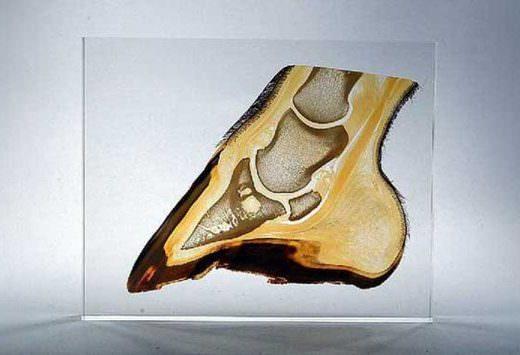
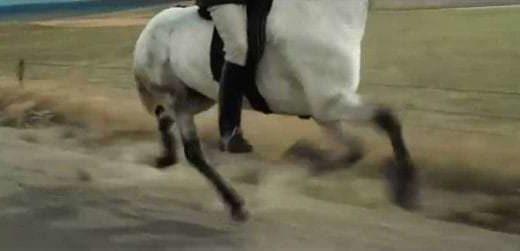
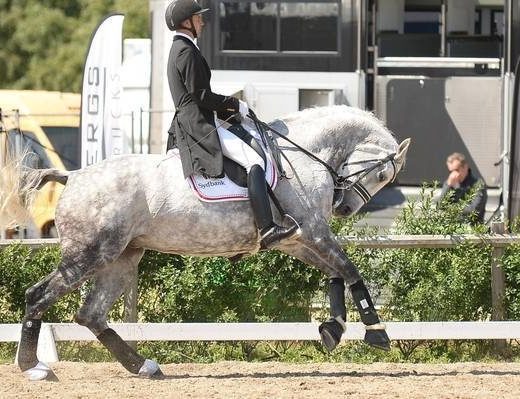

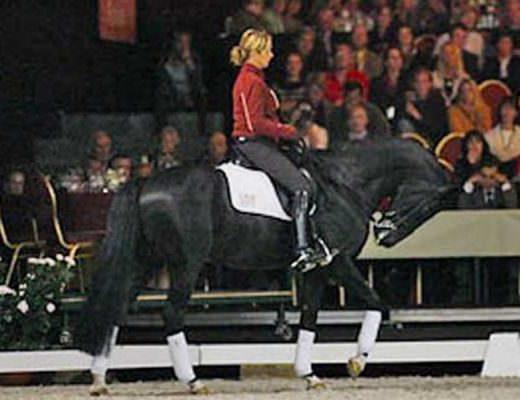
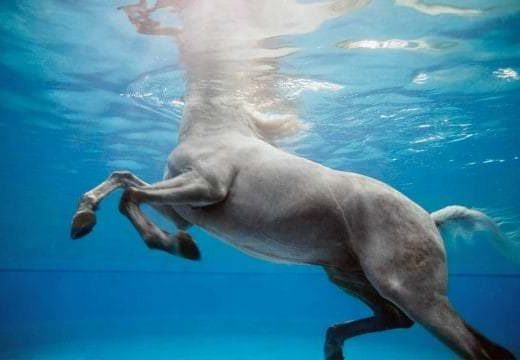
Studies like this make me angry… mostly because despite the fact that it completely misses the entire point of Join Up, there are so many people who will now use this as excuse not to try and experiment with techniques that could greatly improve their horsemanship. Join Up is based on the natural body language of horses and is only done in a confined space (a round pen) for the safety and fatigue of the handler (it can be done in an open space (as Monty has proved himself), a field, an arena, anywhere really – but obviously you’ve got to keep up with your horse!). It’s not about scaring a horse, being dominant or making them run in circles, it’s about controlling their movement by using human body language that mimics horse body language – skills that every good trainer i’ve ever seen uses to communicate with their horses, whether consciously or unconsciously, and whether or not they use Join Up.
All this study proved if you read the full report, is that pressure and release training works with horses (no great surprise there then) – and it’s not surprising or new to learn that this would also work with non-human interactions. There is not one other thing in the entire study that is backed up by evidence, which makes me shocked that this can be called ‘science’. I’ve never heard Monty describe himself as a scientist, but read one of his books and he’ll systematically explain everything he does and why, backing it up with either hard evidence (eg. his extensive use of heart rate monitors), examples observed in wild horses, or personal experience. So while I don’t think everyone has to do things his way (I don’t – I use a variety of techniques picked up from different trainers and riders), if i had to choose between Monty and this so-called scientist, I know who I choose to listen to.
Well said bigbadworld, and so true.
I believe its a prooven methode , Shy Boy had a choice, no pressure held him from choosing … And he came back, HE, as a wild horse chose to be with humans
if that theory is right, put the horse in a blind pen, command the car from outside, where the horse only can see the car. I can tell you, never is going to work!
And deffo this people never understand horse psychology… horse is an animal that lives in a group, with a lieder. this one fight with all to be the lieder, and is fear that gave it his place, and horses are happy with that! they are no humans, they are horses, humans should respect horses being and no try to humanize them!
@bigbadworld Totally agree with you. I’m not even a huge fan of Monty Roberts but to call this study “proof” that join up is a bad training method seems super far fetched to me. Plus the entire method is based upon pressure/release at the right time, so naturally a human controlling a robot should be able to produce the same effect with the robot as they would if they were in the round pen themselves simply because they can read the horse’s cues and know when to release. I’ve never considered it an inhumane method because it still provides the horse with a safe space (near the handler) but I guess that’s a matter that’s up for debate.
Haha science proves itself foolish once again . Theyll be trying to cure cancer next. The roundpen is just a tool to replace the fight or flight responce with curiosity and as with any mind once you have aroused curiosity there is no limit what you can achieve. Whether you use a toy car a rope a ball a human a horse or anything else to motivate movement the result is the same. The one key thing is understanding the responces and responding acordingly. Ie whoever was operating the toy car knew how to respond.
The lead mare in the herd faces the youngster to send him away, she is applying pressure. Same pressure one would use to ask the horse to leave you in the round corral. One uses the precise pressure to get the required response. It is a subtle conversation. Horses converse with their predators.
This so called study is farcical, and the scientists involved, ill informed.. Flight animals are entirely different from predators in their responses, they use minimum changes in their surroundings as a signal to leave because they taste good. A non responsive horse, in the wild, is lunch! This is in their blue print their genetic code, one must use a horse’s flightiness to work with as you train him. Domesticated horses are still pure flight animals! Monty Roberts has, single handed, altered the course of horsemanship, globally, for the better, in his hard worked, insightful, efforts to rid the world of the immense cruelty which has been an intrinsic part of the traditional methods of breaking in of horses.
This whole scam is just a cheap shot at something wonderful that, done correctly, has been proven to work like a charm, time and time again.
Ms Henshalls work in the round pen is flawed as she should not have been there while operating the remote controlled car. The horse spent all the time seeking out Henshall as a safe haven from the car! So the reaction to the car, by the horse is always going to be very different when a human is present compared to when it is just the car and the horse cant see or hear a human. This has high lighted the fact that Ms Henshall doesn’t know how to carry out proper research. At least please get your facts right Ms Henshall or you just look silly.
Ridiculous article, Ridiculous study. Plus, join up or hooking on or catching game or whatever you want to call it are just the beginning of round pen work. These techniques, as rightly said above, Don’t even have to be used in a roundpen, but have been used in a round pen in initial training generally for the safety of horse and human. Sure, someone with no timing or feel could use these methods incorrectly but that’s true of any training method
The second sentence on this article proves the writer has little knowledge of round pen techniques and how they are used. “Often to gain fast results such as starting wild horses under saddle in a matter of days.” Enough said. I concur with Stephanie – ANY training method can be inappropriate in the wrong hands and with the wrong intentions.
Louisa,
Wild may be a relative term at times, but I’ll refer you to two public instances where the breaking and training of horses with little or zero previous handling is given a short timeline.
Cheers
I watched this video carefully and the horse responded to Ms. Henshall’s body language even while it appeared he was responding to the remote controlled car. If she turned her shoulder, the horse turned his. We are natural horsemanship trainers and this was actually quite entertaining to watch as she refutes her own “research”. And no, the round pen techniques we now use in TRUE natural horsemanship methods do not and never should involve fear. It is merely a tool to keep the horse moving in the direction needed without corners to stop it. But we have used square pens, open pastures, and arenas in the absence of a round pen. If done correctly, natural horsemanship is simply communication the horse understands and building a relationship that is not based in fear. And as a professional, Ms. Henshall should never use the name of another person or their technique to ‘disprove’ a theory. Very poor study and extremely unprofessional. She could easily set herself up for a lawsuit….
This study proves that operant conditioning works. An unpleasant stimulus (a menacing human, a whip, pressure from a leg or bit, a remote controlled car) is removed (the human stops being menacing, the whip is lowered, the reins relax or the leg comes off, the car stops) in order to increase the frequency of the desired behavior (at first: not running, then facing, then taking a step or two, then coming toward you, etc). Horses learn very quickly what they must do to make the unpleasant stimulus stop faster, and you can use this to your advantage to shape all kinds of behavior. A horse does not behave the way it does because you have learned to speak horse, it does so because you have reinforced that behavior, whether you know it or not. This type of training does not even require that you are aware of it, which is why so many people fail to see that it has happened. For some reason, it makes more sense to them that they have magically learned to “speak horse”, or more amusingly for me, they think that their horse is so stupid that it actually thinks that they are a horse using actual horse body language. News flash: your horse is not that dumb and he does not think you are a horse. You do not have horse ears and a horse tail, nor have you got the facial expressions, scents or sounds to make him think you are a fine equine just like him and all his horse friends. Nor does good horse training require that you try to fool your horse into believing you are one. Good horse training just requires you be fluent in the language of training. The same principles apply to all animals. Using operant conditioning, specifically the positive reinforcement aspect, will allow you to train everything from a lion to a goldfish to a dog to a turtle. Using it, you are able to train nearly any species to do just about anything that it is physically and mentally able to do. Using it, zoo workers are able to train wild animals to do a variety of voluntary behaviors, including blood draws and ultrasounds. You can use traditional horse training methods, you can horse whisper and join up all you want, but please realise that the reason these methods do anything is not because you or anyone else has decoded the inner workings and mysterious language of the horse. Tiny motions, small gestures, the way you hold your body. .. they all have an effect on a horse, but it’s not because those movements have intrinsic meaning to the horse. The movements are threats on a sliding scale…A wave of my hand may make a horse prick his ears. A step toward him and he may step back. Puffed out shoulders and a purposeful walk may cause him to run off. Is this because I have spoken the horse words for “pay attention”, “back up”, and “move off”? Or is this because the horse has interpreted my movements as threats of varying degrees requiring him to first take notice of me, then create distance between us, and finally flee?
Great reply and I agree with you 100%. Great loss for these that do not grasp the concepts of successive approximation, temporal contiguity or shaping or how horses really learn. Like you say, they suddenly become horses with the misdirected marketing bull. Suppose learning about real methodology about how, what and why certain things work is to real and it is much easier to believe in faerie tails.
If you feel this way, don’t work with horses. Everything is pressure and release and that’s all this study proved. Sure, there will be an element of fear at times. But so there is in a herd situation. And if you think you can do anything with a horse outside of their natural environment without some element of that, you’re crazy. This is a much more humane way of working with horses than the old way of breaking them!
Is an opportunity to examine our current perceptions about horse training demised because of the choice of language and presentation of this article? I can’t help but wonder if more people would be open to the science behind the information if the word “joke” had been left out of the title? Then I ask the question “why specifically make it about Monty Roberts?
Monty Roberts is a man who was smart enough and believes enough in what he does to want to share it with other people. From where I stand this does not warrant using his name in a negative context to discus the science of equine behavior. Rather than the conversation and comments becoming about judging, labeling and defensiveness how about it being about the one thing we all have in common “a desire to understand and connect with horses”
For the love of horses and humans lets give evidence based horsemanship a chance.
This article is a joke. There are so many lessons that can be learned in a round pen utilizing methods that never come close to the pressure, teeth, and hooves horses use on each other. These people need to stop anthropomorphizing and start paying attention.
A horse is a flight animal. Fear is one of their first responses and instincts. The round pen reasoning/join up, whatever you want to call it, relies on the instinctual psychological responses of the horse. The horse understands this and the end result is understanding and calmness. This is indeed the best method of training because both the horse and the trainer need communication, safety, calmness and trust. This method utilizes the body language of pressure and release…the herd dynamics of horses in a herd. It’s what they instinctually know already. I own 9 horses and 1 pony. All were started or restarted with round pen reasoning and my horses are safe and happy horses with great manners but most importantly, they love people and choose to come running when we call. BTW, 3 are champion cutting horses, still competing, 2 are in training for the future show pen.
Round pens were developed from a much older tradition in Europe. This book was a real eye opener for me Dancing with horses here is his website http://www.hempfling.com
Brilliant study! So simple and with such very clear results. Bravo! NH works with many horses in that you get a horse who behaves in a manner that the trainer wants. But positive reinforcement is such a better way to go… it leaves the horse yearning for more interaction with his/her human and striving to be better. Wonderful work that you’re doing. Bravo!
I hope you can build on this interesting study to further educate people how to utilize learning principles such as positive association, positive reinforcement and how to employ more rewarding stimulus response behaviors in training methods and minimize negative reinforcement which is what you so cleverly depicted in your video. I think more trainers should actually study the psychology of learning which is based significantly in animal models. In addition there is actually a study of animal cognition that would be useful to horsemen of all disciplines.
What a crock of rubbish! First of all I believe that we can communicate with horses legand secondly we all, humans and animals operate on fear. Why don’t we touch a hot plate , because we are scared of getting burnt,why do we obey the speed limit, because we are scared of getting a fine etc etc.
What I find disturbing about the video above is the lack of consideration for the horse, several times the horse went to the woman in the middle and his language was ‘ protect me ‘ and all that happened was she chased it with the car again. An experiment that only taught the horse that it could not trust the human in the pen.
What Monty teaches is only just the tip of the iceberg with horse language, Join Up between horses happens although not in a round pen. Every new horse that is introduced to a herd has to go through the join up process with the lead horse of the herd. Monty has used this technique without hurting a horse or making it scared like in the video above, be it in a round pen, a manege or even across open fields. Monty is also a business man not just a horse owner looking after his own horses, like all business he has targets to reach to make a living. If a horse is trained without being harmed either physically or mentally the that is a good business.
I work with herd integration to help reduce the aggression that is shown to the new horse when it’s first introduced to a herd. The new horse is sent away aggressively by the lead horse and the herd for several days until the new horse starts to show it’s acceptance of the lead horse, whether male or female, during this time the new horse will keep being sent away aggressively with bites and kicks until it shows signs of licking and chewing, small circling and the head hanging low to the ground. When the new horse in the herd has shown all of these signs, the lead horse will start to turn it’s body to the side allowing the new horse to come close, but woe to the newbie if it takes advantage of that gesture – join up starts all over again until it listens to the lead horse.
What’s missing in the video too is the energy that comes from the horse or human doing the join up. Horses have extraordinary inner energy levels that most humans cannot even comprehend. When a horse is saying go away it’s not just the look on it’s face and head down, but they emit an extreme energy force that is aggressive and it flows through the air towards it’s target. Have you ever been in a field and you just suddenly think ‘heck i’ve gotta get out of here’. If you know how to meditate and feel natural energy around you, then you are more likely to be aware of these energies that horses give off.
When you see a herd panic and take to flight, it’s not just the running action that makes them all run, it’s the panic energy force that the first horse that panics sends out, it ripples through the herd setting off all of their panic energy forces.
Humans experiment and try to work things out even causing harm or stress to the horses just to find out if it works, it’s cruel to even attempt such experiments. Just watching horses in the wild or even domestic horses in larger herds you’ll find they give you all the answers you need to know; from a nod of the head, a blink of the eye, the way it’s moves it’s body, it’s all there and horses communicate all of the time. Humans are just to blinkered with their own ‘experiments’ to see what’s going on.
Do you have a horse that you can’t catch? The biggest problem with a horse you can’t catch is that the horse is picking up on Your energy force that you are emitting, and the more frustrated you get, guess what the more energy you put out which ‘sends the horse away’ exactly the same as a horse would do to a newbie in a herd during join up. You are unwittingly performing an aggressive act against the horse and sending it away. Unless you are in to meditation and feeling natural energy you won’t even be aware that you’re doing it.
Stop experimenting on animals and learn from them instead.
It’s all about the horse – no whips, no spurs, no bits, no metal shoes – all these in most hands cause pain and suffering to horses.
It’s sad how many people still believe in the dominance theory.
Thank you for saying this.
I am no fan of those who stress a horse in round pens, but over the last few years, I’ve had people snap “Oh, I’d NEVER use a round pen!” when I mentioned mine. The techniques are the problem, not the tool.
If I had e er tried to publish ‘research’ and ‘proof’ such as this I would have been ridiculed! No understanding of the subject or background shown at all and no thought of how any such ‘experiment’ may have been carried out. This shows ansolutely nothing.
BTW I do practice natural horsemanship and used to compete in dressage. I am not a fan of Monty Roberts but why mention him specifically?
BRAVO! A win for horses everywhere! Never used the round method, never will, never been hurt, never had a horse think it couldn’t have a voice.. having a conversation with a horse is by far the best true join up you could ever receive. I’ve been told the way my current horse will be a partner is by round penning him and find a cowboy who will teach him a lesson.. The poor horse had EPM, he missed his old friends, and he had gastric ulcers. Once we took care of his pain, EPM and stress, he became a soft wonderful and fun partner.. he knows I’ll pay attention and care for him if he’s not feeling good; and he also has fun participating in whatever when he is feeling good. Give them some credit! This round pen join up thing is outdated and is no longer supported by great horsemen like Manolo Mendez, Warwick Schiller, and many others who have the courage to be lifelong learners and realize it’s okay to change you tactics.